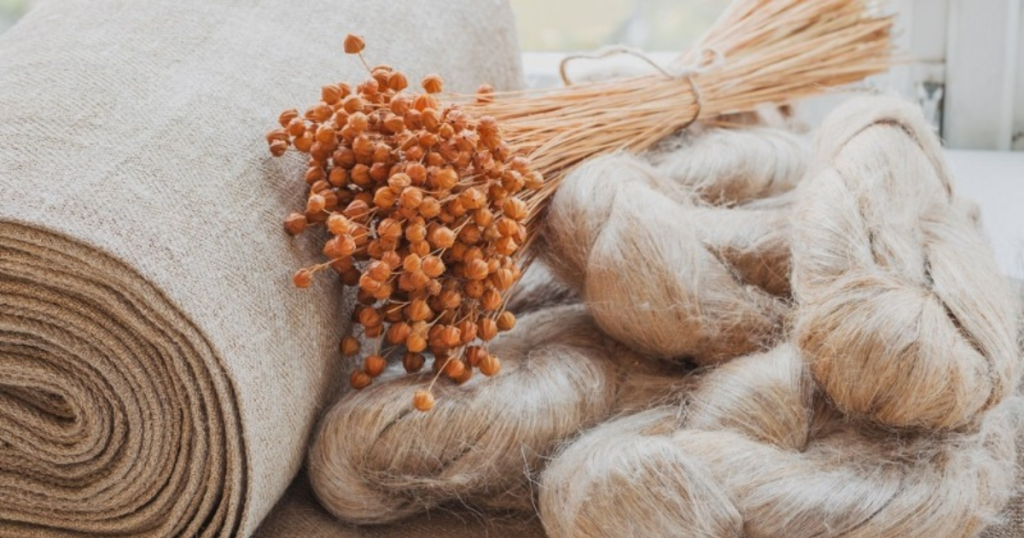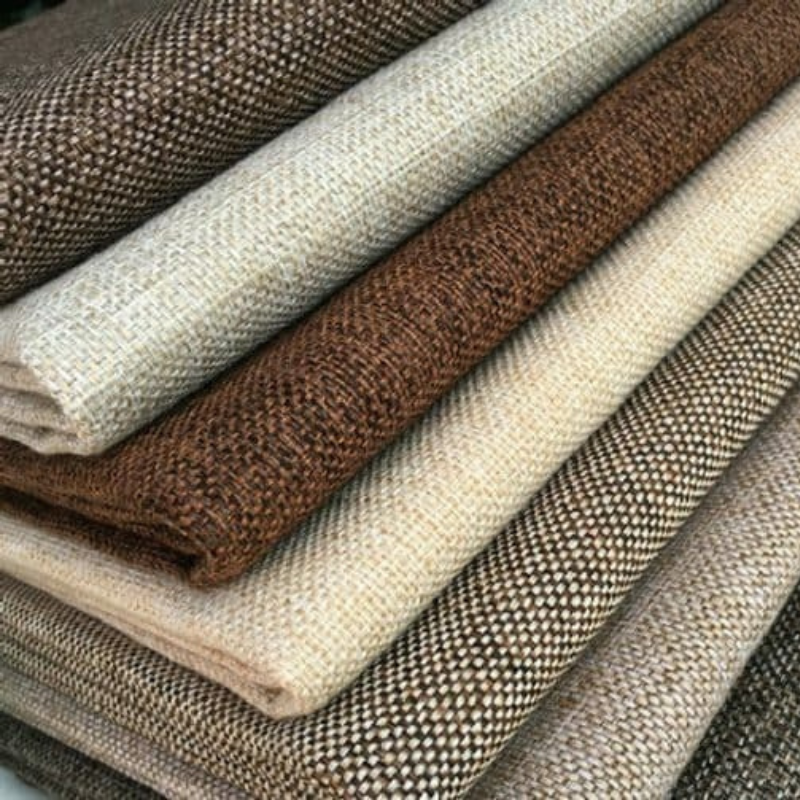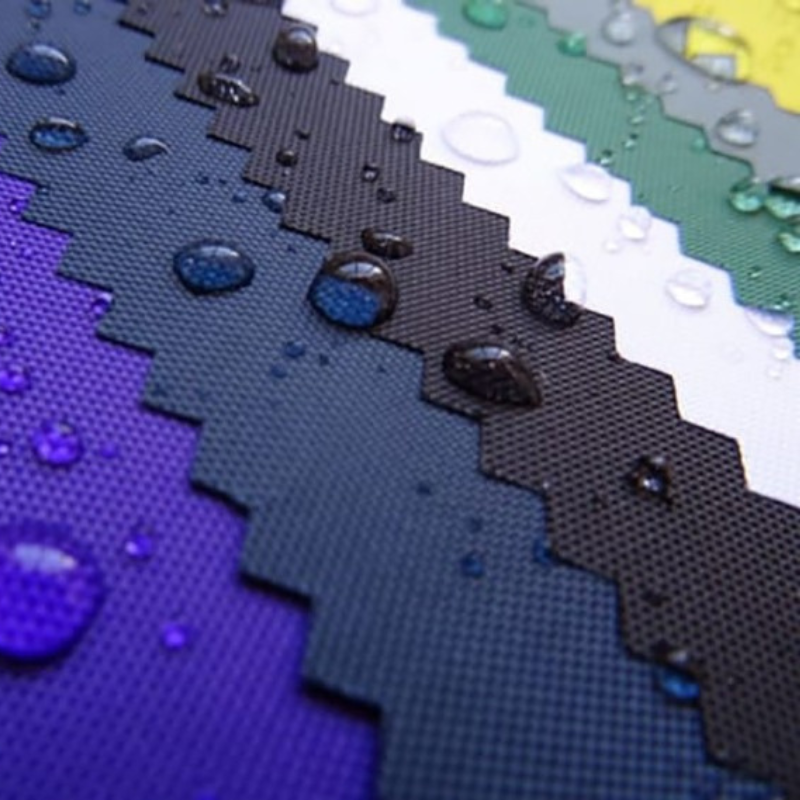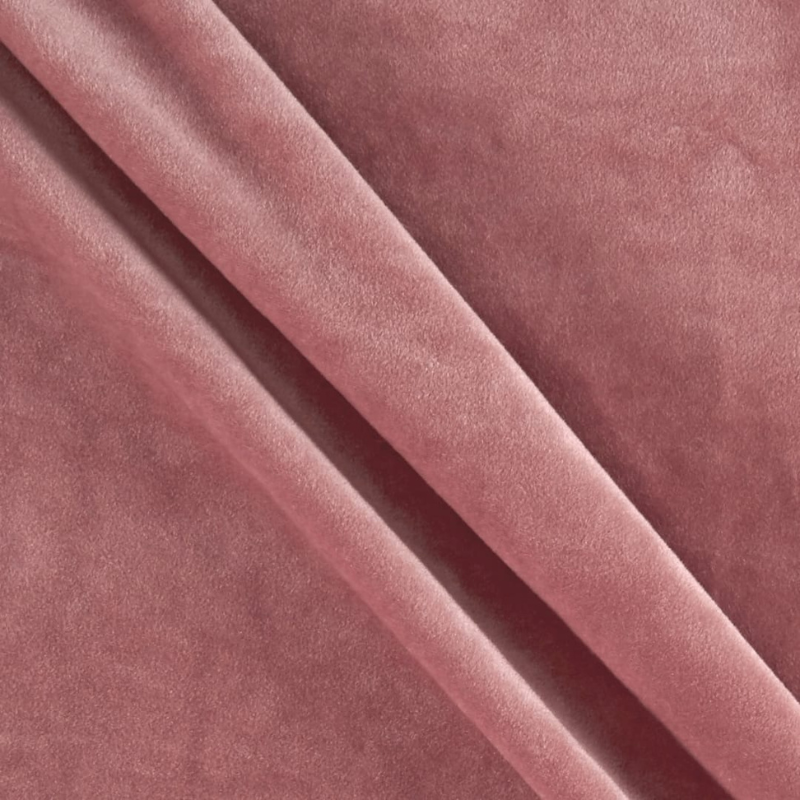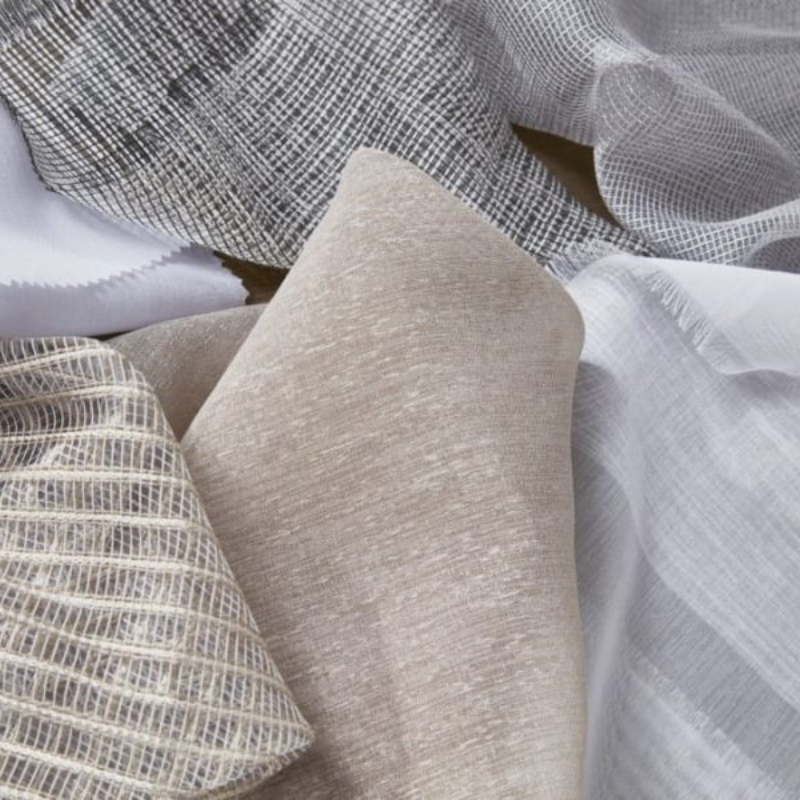Curtains are not only used to block light but also play a crucial role in interior decoration, shaping the style and living space of every home. Choosing the right curtain fabric not only enhances aesthetic value, color, and design but also ensures comfort and convenience in use.
Here are the most popular curtain fabrics today, along with their prominent features and applications. We will compare the three most common curtain materials: Cotton, Polyester, and Linen, to give you a clear perspective and help you choose the right one for your home.
1. 5 Popular curtain fabrics today
1.1. Cotton fabric
Cotton fabric is always a top choice due to its breathability and softness. This material provides a comfortable, cool feeling, making it especially suitable for spaces like bedrooms and living rooms. Cotton is also easy to clean; you can machine wash or hand wash it without worrying about shrinkage or losing shape. With its high durability and excellent absorbency, cotton curtains help create a well-ventilated and pleasant atmosphere, particularly during hot summer days. This is also an ideal choice for families with young children because of its safety and skin-friendly properties.
1.2. Polyester fabric
Polyester is a popular synthetic material known for its high durability and effective wrinkle resistance. It does not fade or shrink after multiple washes, ensuring that polyester curtains maintain their beauty and newness over time. This material is also water and dirt-resistant, making it easy to clean and maintain. With these characteristics, polyester curtains are an ideal choice for spaces requiring high durability, such as bathrooms and kitchens. The variety of colors and patterns available in polyester also makes it easy to choose a curtain design that matches your interior decor style.
It is also a good choice for areas with high humidity due to its water-resistant properties.
1.3. Linen fabric
Linen fabric, also known as flax fabric, is a natural material made from flax fibers, renowned for its natural beauty and excellent breathability. Linen provides a cool, comfortable feeling, making it ideal for hot summer days. This material is environmentally friendly and safe for health. Linen has a refined, luxurious, and natural beauty that helps create an elegant and cozy atmosphere in living rooms and bedrooms. However, linen tends to wrinkle, so proper care and maintenance are needed to preserve its original appearance.
With its natural and luxurious beauty, linen is an excellent choice for those who prefer an interior style that is close to nature.
1.4. Velvet fabric
Velvet fabric is an excellent choice for those who appreciate luxury and elegance. With its smooth and lustrous surface, velvet curtains add a touch of sophistication to any space. Velvet has good soundproofing and thermal insulation properties, keeping living rooms and bedrooms warm during winter while creating a quiet and comfortable environment. However, velvet requires careful cleaning and maintenance to prevent dust accumulation and maintain its long-lasting luxurious appearance.
1.5. Sheer fabric
Sheer fabric, also known as voile, is thin and lightweight, offering a delicate and airy feel. This material diffuses natural light, providing a bright and comfortable space while still maintaining necessary privacy. Sheer curtains are an excellent choice for living rooms and bedrooms, helping to create an open and pleasant atmosphere. However, due to its thinness, sheer fabric is often combined with other types of curtains to enhance light-blocking and thermal insulation features.
2. Comparing Curtain Fabrics: Cotton, polyester, linen
- Advantages
Cotton
- Breathability: Helps keep the space cool and comfortable, especially during hot summer days.
- Softness: Provides a pleasant touch, creating a cozy and welcoming atmosphere.
Easy to clean: Easily washable, can be machine-washed, making it convenient for maintenance and preserving the curtain's appearance.
Polyester
High durability: Resistant to tearing and wear over time, ensuring it remains in optimal condition.
Wrinkle-resistant: Minimizes wrinkling, saving time and effort.
- Water and dust resistant: Easy to clean and maintain
Linen
Natural material, environmentally friendly, and safe for health
Good breathability, helps keep the space cool and airy, especially during the summer.
High durability: Although it's a natural material, linen is highly durable, resistant to tearing and wear, ensuring a long lifespan.
- Disadvantages
Cotton
- Prone to wrinkling: One of the major drawbacks of cotton is its tendency to wrinkle. After washing, cotton curtains need to be ironed to maintain their original appearance.
- Lower durability: Compared to synthetic fabrics, cotton may wear and tear over time, especially if not properly maintained.
- Applications: Living rooms, bedrooms, or areas that require comfort and softness.
Polyester
Less breathable than cotton may cause a feeling of warmth in tropical environments.
Not as soft as cotton: Although durable, polyester is not as soft as cotton and can sometimes feel stiff.
- Applications: Offices, bathrooms, and areas that require durable and low-maintenance curtains.
Linen
Prone to wrinkling: Requires frequent ironing to maintain its original appearance.
Higher cost: Linen generally costs more than cotton and polyester, which may be a factor to consider when making a choice.
- Applications: Living rooms and bedrooms, where comfort and coolness are needed.
Choosing the right curtain fabric depends on your personal needs and preferences. Cotton offers softness and comfort, making it suitable for family living spaces. Polyester is a durable and low-maintenance option, ideal for areas that require curtains to withstand harsh conditions. Linen stands out for its breathability and natural beauty, perfect for those who appreciate a nature-inspired style.
I hope that this article has provided you with useful information to choose the most suitable curtain fabric for your living space. Wishing you success in finding the perfect curtains that bring beauty and comfort to your home.

